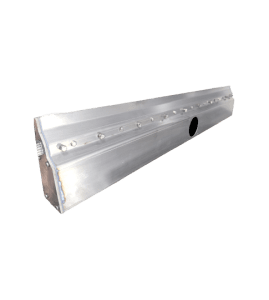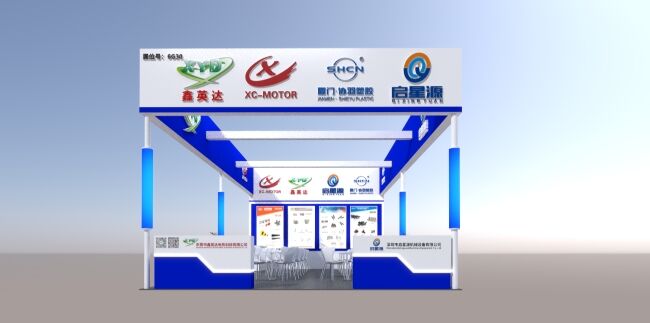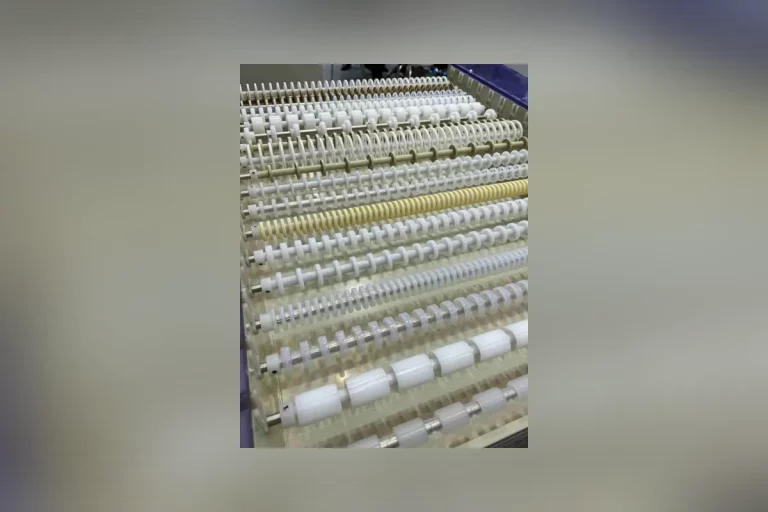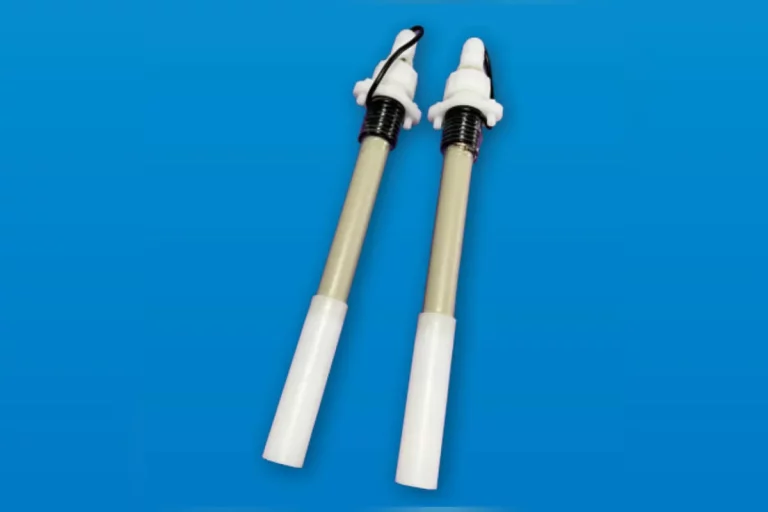
An air knife is a device that blows a high-velocity, uniform “sheet” or “curtain” of air across a surface. Think of it as a high-powered, ultra-efficient squeegee, but instead of a rubber blade, it uses a precise stream of air to remove water, debris, or other contaminants.
They are typically long, narrow, aluminum or stainless steel units that can be mounted in various positions to suit the application.
Why Do Air Knives Matter?
Air knives might not grab headlines, but they play a big role in keeping things running smooth in factories and workshops. Picture this: a tool that shoots out a steady stream of air to dry parts, wipe away dust, or cool down hot surfaces. That’s an air knife in action. They cut down on mess and speed up work without wasting energy like old-school methods.
In many lines of work, from making electronics to packing food, these devices help avoid problems like wet spots ruining labels or dust messing up clean rooms. Picking the right one isn’t just about grabbing any off the shelf. It can save money and make your setup more reliable. Think about how a good air knife fits into your daily grind—it could change how you handle tasks.
How Air Knives Work in Real Life
At their core, air knives create a thin, fast-moving sheet of air. This air comes from blowers or compressors and gets shaped through slots or nozzles. The result? A powerful curtain that blasts away water or debris. For example, in a bottling plant, it dries cans before they get stamped. Simple, yet effective.
But not every setup needs the same kind. Some jobs call for gentle airflow to avoid scratching delicate items, while others demand a strong blast for tough grime. Knowing this basics helps you spot what your operation really requires.
Key Things to Look For When Picking an Air Knife
Choosing air knives for your industry starts with matching them to your needs. Don’t rush it. Consider the basics like size, power, and build. A mismatch could lead to breakdowns or higher bills.
Airflow strength stands out as a top factor. Too weak, and it won’t do the job. Too strong, and you might damage goods or use extra power. Measure what you need based on your line speed and material types.
Materials That Make a Difference
The stuff an air knife is made from matters a lot. Plastic versions work fine in mild spots, but for harsh chemicals or heat, go with metal like stainless steel. It lasts longer and fights off rust.
Here’s a quick rundown in a table to compare:
| Material Type | Best For | Drawbacks |
| PVC or Plastic | Light duties, low cost | Not great in heat or acids |
| Aluminum | Everyday use, lightweight | Can wear out faster in tough spots |
| Stainless Steel | Wet, corrosive areas | Higher upfront cost |
Pick based on your environment. If your shop deals with acids in cleaning, stainless wins every time.
Size and Shape Options
Length counts. A short air knife suits small tasks, but for wide conveyor belts, you need longer ones or multiples linked up. Shapes vary too—straight for flat surfaces, curved for round items like bottles.
Customization comes in handy here. Some suppliers let you tweak dimensions to fit odd spaces. This avoids awkward setups and keeps air flow even.
Matching Air Knives to Your Line of Work

Every field has its quirks. In food handling, you want air knives that meet clean standards and dry packages fast without contamination. Electronics? Precision is key to avoid static buildup on boards.
Take PCB making, for instance. Air knives blow off water after rinsing, keeping circuits spotless. In cars, they clear dust from parts before paint. Tailor your choice to these demands.
Food and Drink Processing
Bottles and cans need drying before labels stick. A good air knife cuts drying time and drops energy use. Look for ones that handle moisture without breeding germs.
Electronics and Circuit Boards
Here, gentle but effective airflow prevents damage to tiny parts. Air knives help in cleaning steps, like after etching or developing.
- Focus on low-noise models to keep the workspace calm.
- Check for even air distribution to avoid spots.
Other Fields Like Glass or Textiles
In glass work, air knives remove dust for clear finishes. Textiles use them to dry fabrics without heat damage. Versatility shines in these areas.
Tips for Installation and Upkeep
Getting it set up right pays off. Mount air knives close to the action—about 1-3 inches from surfaces for best results. Angle them to push debris away, not back onto lines.
Upkeep is straightforward. Clean slots regularly to avoid clogs. Check connections for leaks. A little attention keeps them humming for years.
Common Setup Mistakes to Dodge
Don’t overlook blower compatibility. Pair with the right fan or compressor. Wrong match leads to weak performance.
Also, test in your space first. What works in one shop might flop in another due to humidity or dust levels.
How Air Knives Boost Your Business Edge
Beyond the basics, these tools build your brand. Reliable drying means fewer rejects, happier clients. It shows you’re serious about quality.
On a personal level, workers appreciate gear that makes jobs easier. Less manual wiping means more focus on skilled tasks. Over time, this lifts team morale and sharpens your company’s rep.
Savings add up too. Cut energy bills by ditching inefficient dryers. Bullet points on gains:
- Lower power costs from targeted air use.
- Fewer stops for fixes.
- Better product quality, fewer returns.
In competitive fields, small edges like this set leaders apart.
Meet Shenzhen Qixingyuan Machinery Equipment Co., Ltd.: Your Go-To Air Knives Supplier
Looking for a solid partner in air knives? Shenzhen Qixingyuan Machinery Equipment Co., Ltd. steps up. Founded back in 2008, this team specializes in making and selling air knives alongside parts for PCB lines. They blend design smarts with real-world know-how to deliver tools that fit various industries.
What sets them apart? A focus on quality materials and custom options. Whether you need standard setups or tweaks for unique jobs, they handle it. Their track record includes patents and a push for innovation, all while keeping customer needs front and center. If you’re in electronics or beyond, their air knives aim to make your processes smoother and more efficient.
Wrapping It Up: Make the Smart Pick
Summing it all, choosing air knives for your industry boils down to knowing your setup and picking tools that match. From materials to applications, the right choice cuts waste and amps up output. It’s about building a system that lasts and grows with you. Dive in, assess your needs, and watch the difference unfold.













